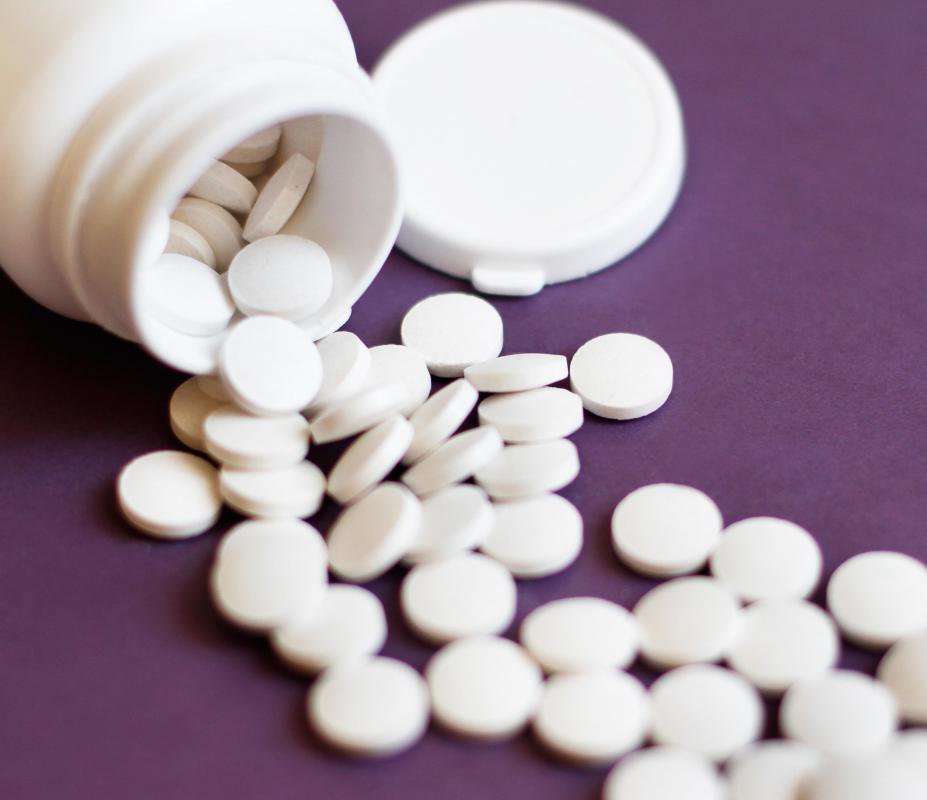At WiseGEEK, we're committed to delivering accurate, trustworthy information. Our expert-authored content is rigorously fact-checked and sourced from credible authorities. Discover how we uphold the highest standards in providing you with reliable knowledge.
What is Epididymitis?
The epididymus is a hollow tube located at the back of the testicles through which semen passes. In some cases, this tube can become irritated and inflamed causing a condition called epididymitis. This inflammation can result in extreme pain in the scrotum, and it may be misdiagnosed as a testicular torsion. Treatments for the two conditions are quite different, so appropriate diagnosis is necessary to determine appropriate care.
Some other conditions may also result in pain in this region. Medical professionals evaluating patients for epididymitis will usually wish to rule out testicular cancer, the presence of benign cysts, and hernias. Regular testicular self-examination may make diagnosis easier, since men are likely to notice the presence of cysts or lumps on the testicles.

Usually, this inflammation is caused by a bacterial infection. Most commonly, urinary tract infections may result in spread of bacteria to the epididymus. Other causes of this condition include the sexually transmitted diseases gonorrhea and chlamydia. When someone sees a medical professional for this problem, it is important to disclose recent sexual history, particularly where safer sex has not been practiced or when the person has had multiple sexual partners.

Since the usual cause is bacterial, treatment almost always includes antibiotics. Men may also be asked to use cold compresses on the scrotum and elevate the pelvis to reduce swelling. Patients are usually seen again by a healthcare professional after antibiotic treatment to be certain that the swelling is no longer present.
In some cases, pain becomes very severe and may extend to pain in the lower abdomen. When epididymitis is not caused by infection but is caused by conditions that cause nerves to swell, treatment may be more complex and difficult. Some cases may require the use of injected steroids to quickly bring down significant swelling.

On some occasions, patients might require hospitalization to administer a pain-blocking agent, which can offer long-term pain relief. This medication is called a cord block and can often prevent the person from feeling pain for a couple of months, usually long enough for the condition to clear. Sometimes, oral pain medications like codeine or hydrocodone are effective in pain relief as well. Anti-inflammatories like ibuprofen may often be helpful in the temporary relief of symptoms.

Those affected with bacterial epididymitis usually do not have recurrence of symptoms, unless they have another causal bacterial infection. Those with non-infectious cases may find that the condition can recur. Though this condition can often be cured completely, some find that it remains acute and opt to have the epididymus removed. This is usually a method of last resort, since it results in infertility. For some men, however, the sacrifice is well worth the resulting relief from pain.
AS FEATURED ON:
AS FEATURED ON:
















Discussion Comments
I had epididymitis when I was 22. It was caused by my left testicle getting caught in my underwear at work and popping the left vas deferens. My left testicle swelled to the size of a baseball and I was hospitalized. My treatment was shots of penicillin in the butt for the infection and a course of small white pills that no one ever identified. No surgery.
When the infection was all cleared up, my left testicle was atrophied down to about the size of an almond and has been that way my whole life. My right was unaffected and has been normal and trouble free. I have sired two children that I'm sure carry my genes, and may have caused two fertilizations that were aborted. But those two may have not been mine.
When I was younger and still sexually active, I had women ask about my shrunken lefty during sex, but most were too interested in themselves to even notice.
I'm now 67 and nothing in my scrotum has changed much in all these years. My left "almond" is tender during self exams. My left epididymis is atrophied but still very much there, though certainly not functional. I still can ejaculate about 3 ml of semen. I have no reason to test it, but I'll bet my sperm count in those 3 ml is still in the 200-300 million range and that I'm still dangerously potent.
My right testicle and its tubes feel the same as they always have, and my erection is as big and hard as it was 20 years ago. I offer this post to assure younger males who have suffered this affliction/injury that you will be just fine. There's a reason for nature providing us with two testicles!
I have had swollen testicles, two lumps on either side of the head and tail of the epididymis, for 10 months now. Of late, the pain has increased and i take a painkiller every night. A mild hernia was diagnosed when the ultrasound scan was done, but no treatment was suggested.
The first diagnosis was epididymitis (because of fever) and taking antibiotics for months together has not helped. Please advise. --Srini, Bangalore,India
What is the process of having your epididymus removed? What is life after the surgery like? Can you still have sex? Things like that
Shinde, Thanks for your question. As mentioned in the article, Epididymitis can be caused by a variety of bacterial infections, including bladder infection. It does not have to be caused by contraction of sexually transmitted diseases. It's a good idea to see your doctor to determine cause and treatment.
can Epididymitis be cured completely? i have never had any kind of sex with anybody. i think it might be due to my own sperms moved in reverse direction.
Post your comments